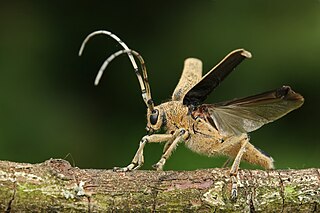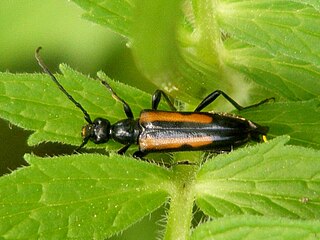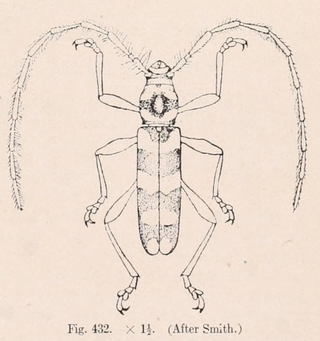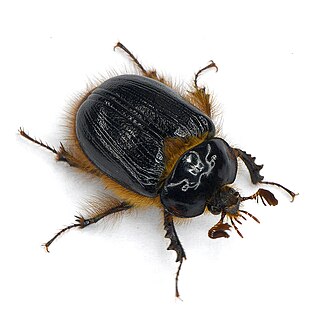
The rain beetles are a group of beetles whose extant species are found only in the far west of North America. They spend most of their lives underground, emerging in response to rain or snow, thus the common name. Formerly classified in the Scarabaeidae, they are currently assigned to their own family Pleocomidae, considered the sister group to all the remaining families of Scarabaeoidea. The family contains a single extant genus, Pleocoma, and two extinct genera, Cretocoma, described in 2002 from Late Cretaceous deposits in Mongolia, and Proteroscarabeus of Late Cretaceous China.

Pleocoma is the only extant genus of rain beetles and is endemic to the Pacific states of North America. Fossil remains of Pleocoma have been found in the Yixian Formation in China, suggesting beetles in this genus have existed in something like their present form since at least the Cretaceous period. There are 27 described species in Pleocoma.
Linsley is a surname. Notable people with the name include:

Saperda carcharias is a species of longhorn beetle.

Eburia is a genus of beetles in the family Cerambycidae.

Strangalepta is a genus containing only one species, Strangalepta abbreviata, a longhorned beetle in the family Cerambycidae.
Acmaeopsoides rufula is a species of beetle in the family Cerambycidae, and the only species in the genus Acmaeopsoides. This beetle is distributed in Canada, and United States.
Megapsyrassa is a genus of beetles in the family Cerambycidae, containing the following species:
Psyrassa is a genus of beetles in the family Cerambycidae, containing the following species:
Earle Gorton Linsley was an American entomologist.

Dryobius sexnotatus is a species of beetle in the family Cerambycidae. It is the only species in the monospecific genus Dryobius.
Eustromula keiferi is a species of beetle in the family Cerambycidae. It was described by Earle Gorton Linsley in 1934.

Mecas is a genus of longhorn beetles found in North America, containing the following species:
Phaea is a genus of longhorn beetles of the subfamily Lamiinae, containing the following species:
Lamacoscylus usingeri is a species of beetle in the family Cerambycidae. It was described by Earle Gorton Linsley in 1935. It comes from Mexico.
Pleocoma conjungens, the Santa Cruz rain beetle, is a species of rain beetle in the family Pleocomidae. It is found in North America.

Pleocoma dubitabilis is a species of rain beetle in the family Pleocomidae. It is found in North America.

Typocerus lunulatus is a species of flower longhorn beetle of the family Cerambycidae. It is found in North America.
Pleocoma hirticollis is a species of rain beetle in the family Pleocomidae. It is found in North America.

Judson Linsley Gressitt was an American entomologist and naturalist who worked in Japan and China. He worked mainly on beetle diversity in Southeast Asia and in applied areas, particularly medical entomology, and was the founder of the journal Pacific Insects and the Wau Ecology Institute in Papua New Guinea. Apart from insects, he collected specimens in numerous taxa and several have been named after him.








